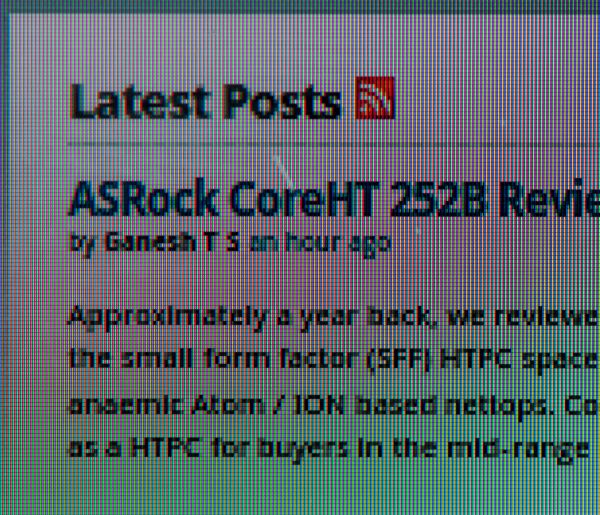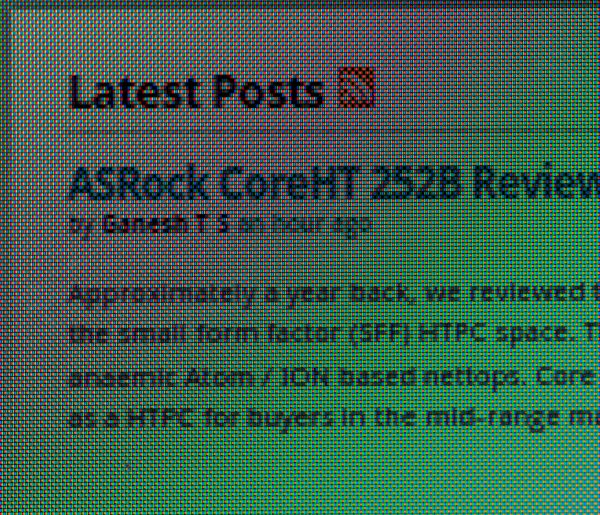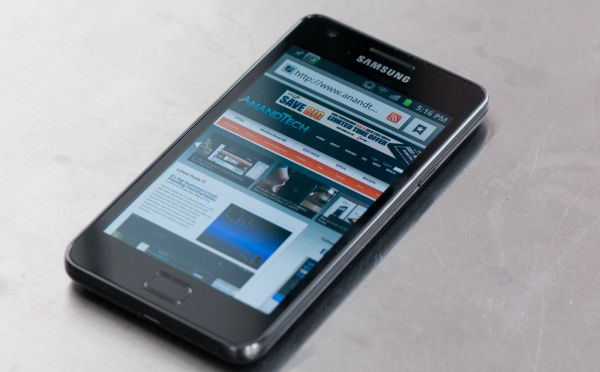Samsung Galaxy S 2 (International) Review - The Best, Redefined
by Brian Klug & Anand Lal Shimpi on September 11, 2011 11:06 AM EST- Posted in
- Smartphones
- Samsung
- Galaxy S II
- Exynos
- Mobile
Display
One of the highlights of SGS2 is its 4.3“ SAMOLED+ display, which we’ve seen before on phones like the Droid Charge, and a 4.5” version of on the Samsung Infuse 4G. Though the panel is the same as what we’ve seen in the past, the controller and software are different.
As a quick refresher, Samsung has now passed through three variants of AMOLED. The first was straight up AMOLED which we saw on phones like the Nexus One and Incredible in a 3.7“ WVGA format with RGBG PenTile. The next was Super AMOLED, which was 4.0” WVGA with PenTile and adorned Galaxy S. The main improvements with Super were integration of the digitizer with top glass and use of optically transparent adhesive to reduce air gaps and subsequent fresnel reflections that add glare and reduce transmissivity. The net effect of that was improved outdoor readability and potentially some power savings from losing less light to back reflections.


Left: Super AMOLED Plus, Right: Super AMOLED
So now we’re up to Super AMOLED Plus (SAMOLED+), so what does this add? Well first, size is now 4.3“ or 4.5” (depending on what tickled some carrier’s fancy), and resolution is still WVGA (800x480), but the big change is that PenTile RGBG is gone. In its place is a standard RGB stripe. I’ve been rather critical of RGBG PenTile in the past purely because it emulated higher effective resolutions by using fewer subpixels (2 per logical pixel) and as a result had a characteristic grain in some circumstances. On AMOLED especially it wound up being distracting more than it was novel, and on 4" displays, it seemed that subpixels were visible with the naked eye and average visual acuity. Furthermore there were some issues with an offset pattern like RGBG and the UI direction Android was taking. Single pixel wide UI elements, some text, and solid primary colors were the main culprits where RGBG could, without considerable scrutiny, look characteristically grainy.
So why is it gone now? The big reason is probably because a corresponding move to a larger panel increases the size of those subpixels, and no doubt 4.3“ WVGA with PenTile would look even more grainy despite having the same ”effective“ resolution. Four inches was pushing it for a grid that started life at 3.7”, and 4.3“ probably was a step too far. In addition, subpixels are also correspondingly larger in the 4.3” RGB stripe (and the process mature enough now) that certain color subpixels being more prone to failure than others (and this needing to be sized appropriately) should no longer be a concern. Samsung also claims that power drain has been reduced in SAMOLED+ by almost 20% from the previous generation, no doubt partially thanks to fabrication maturity and changes made that come with better understanding of the process.
The same benefits apply with SAMOLED+ as the previous generations though - absolutely black blacks due to the subpixels not emitting any light in the off state, and potentially super vibrant colors (if calibrated properly). Unfortunately the few issues we saw with SAMOLED+ on other phones continues here as well - white point that varies with brightness level, a chance of overheating, and a bit of lingering sharpening.
Let’s start with the first one, which a lot of users have dubbed ‘yellowing’. For a while now we’ve been gathering white point data at various brightness levels. Obviously we did the same thing with SGS2.

I’ve measured brightness (full-screen white and black) and white point at six brightness levels on the SGS2. Before I measured the SGS2, I noted that subjectively there’s the most visible change in color temperature after you dip below the 50% brightness mark. To that extent, I took more measurements below that halfway point. I also tossed in the Samsung Infuse 4G (which we received but didn’t formally review) which has a 4.5" SAMOLED+ display that no doubt is identical to what’s headed to the Sprint and T-Mobile SGS2 variants, though with a different display controller. I also tossed in the Samsung Galaxy S 4G as a SAMOLED data point, and the Nexus One as an AMOLED data point, just so you can see how things have changed over the now 3 generations of AMOLED panels Samsung has shipped.
The data bears out the effect that numerous subjective parties have noticed - SGS2’s display temperature gets warmer at lower brightnesses, and varies between 7328K at 0% brightness and 8600K at 100% brightness. It’s enough of a delta in white point to be unfortunately very visible to the naked eye. There’s also an interestingly large amount of variance between the three SAMOLED+ phones we’ve measured, though the same shape curve is just translated around for the Infuse, the Charge appears to be very blue everywhere. Bear in mind again that the SGS2 uses a different display controller than the previous generation of devices.











132 Comments
View All Comments
ph0tek - Sunday, September 11, 2011 - link
First of all Android is better than iOS in so many ways that i'd be here all day listing them..... and the same goes for this phones hardware compared to the iPhone so i wont even bother!Secondly the S2 might have a slightly lower display res but it has better response times, infinitely better contrast, vastly better blacks, more vibrant colours, plus superior viewing angles. And all this on a screen that isn't stupidly tiny. It's clearly better overall.
Everyone who i've shown to this phone to instantly says the screen is the best they've seen, even iPhone users.
With the battery theres not much difference, it has longer battery life for talk time than iPhone, and also longer battery when using hotspots, while displaying Flash content too! Yes you can view the WHOLE web on this.
I find it very amusing that you even try to compare the iPhone to this. Theres simply no comparison. Like comparing a ferrari to a skoda. Just makes you look stupid.
niva - Monday, September 12, 2011 - link
Why are you arguing with an iFanboy?LostViking - Saturday, September 17, 2011 - link
You could argue that the SGS 2 is better (for me it wins hands down), and you could argue that the iPhone 4 is better.Some people get sever rashes all over their body by using products not made by Apple ;)
For those people the original iPhone beats the SGS 2 and all future Android devices easily :)
jjj - Sunday, September 11, 2011 - link
hard to like any new phone now when Krait and A15 are around the corner.killerroach - Sunday, September 11, 2011 - link
Remember... there's ALWAYS something around the corner.jjj - Monday, September 12, 2011 - link
Actually there is rarely something like this around the corner.This time we got both new cores and a new node (and the jump from 40/45 nm to 28 nm is pretty big).3lackdeath - Sunday, September 11, 2011 - link
Nice phone but WP7 is faster and smoother.OBLAMA2009 - Sunday, September 11, 2011 - link
400x800? no thxMacTheSpoon - Sunday, September 11, 2011 - link
What a staggeringly awesome review. I am really impressed. The audio section--wow.I sure wish the screen were brighter and the audio better on this phone, but I have to put it on my short list.
Piyono - Sunday, September 11, 2011 - link
"There, Anand and *I* played with..."